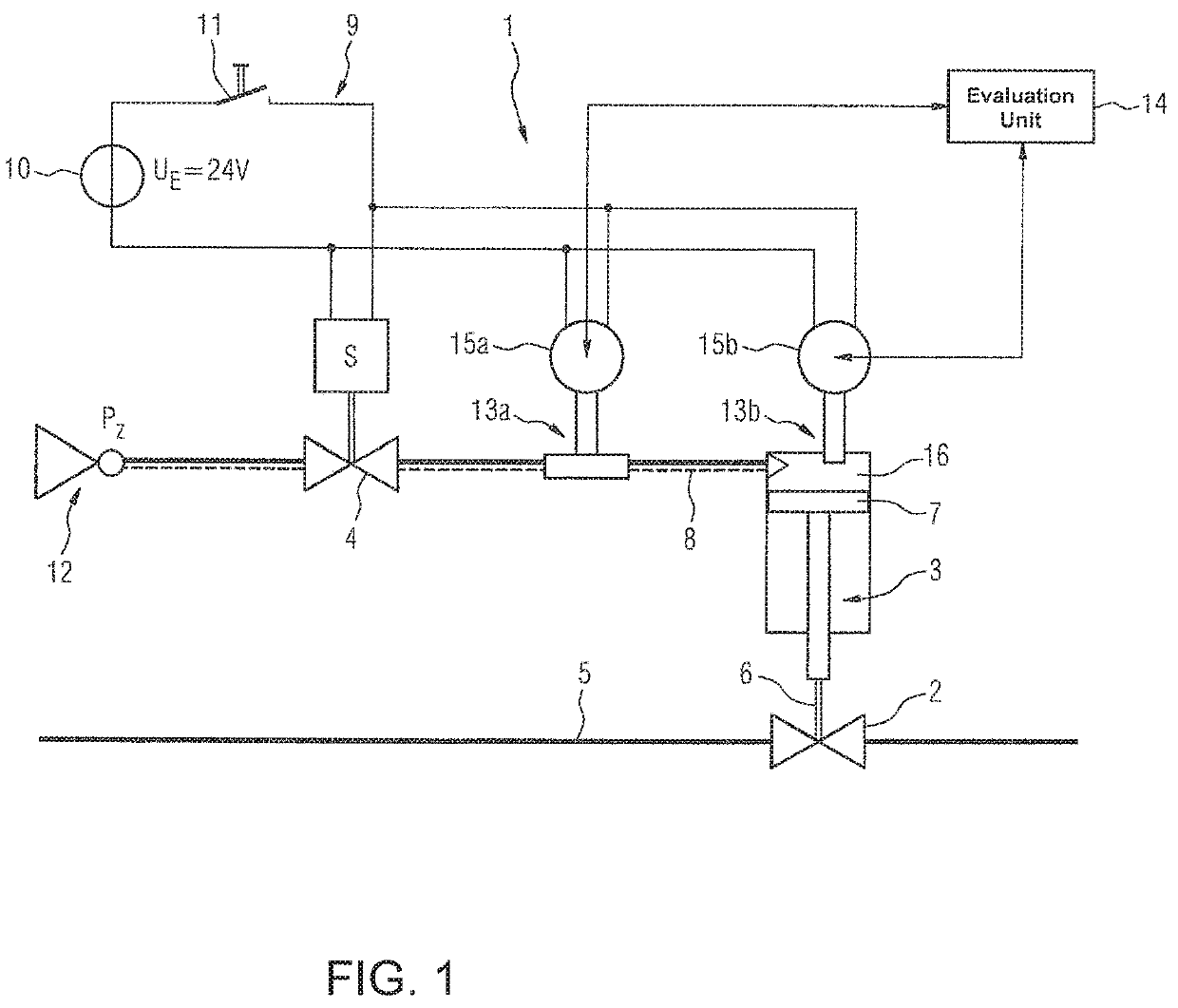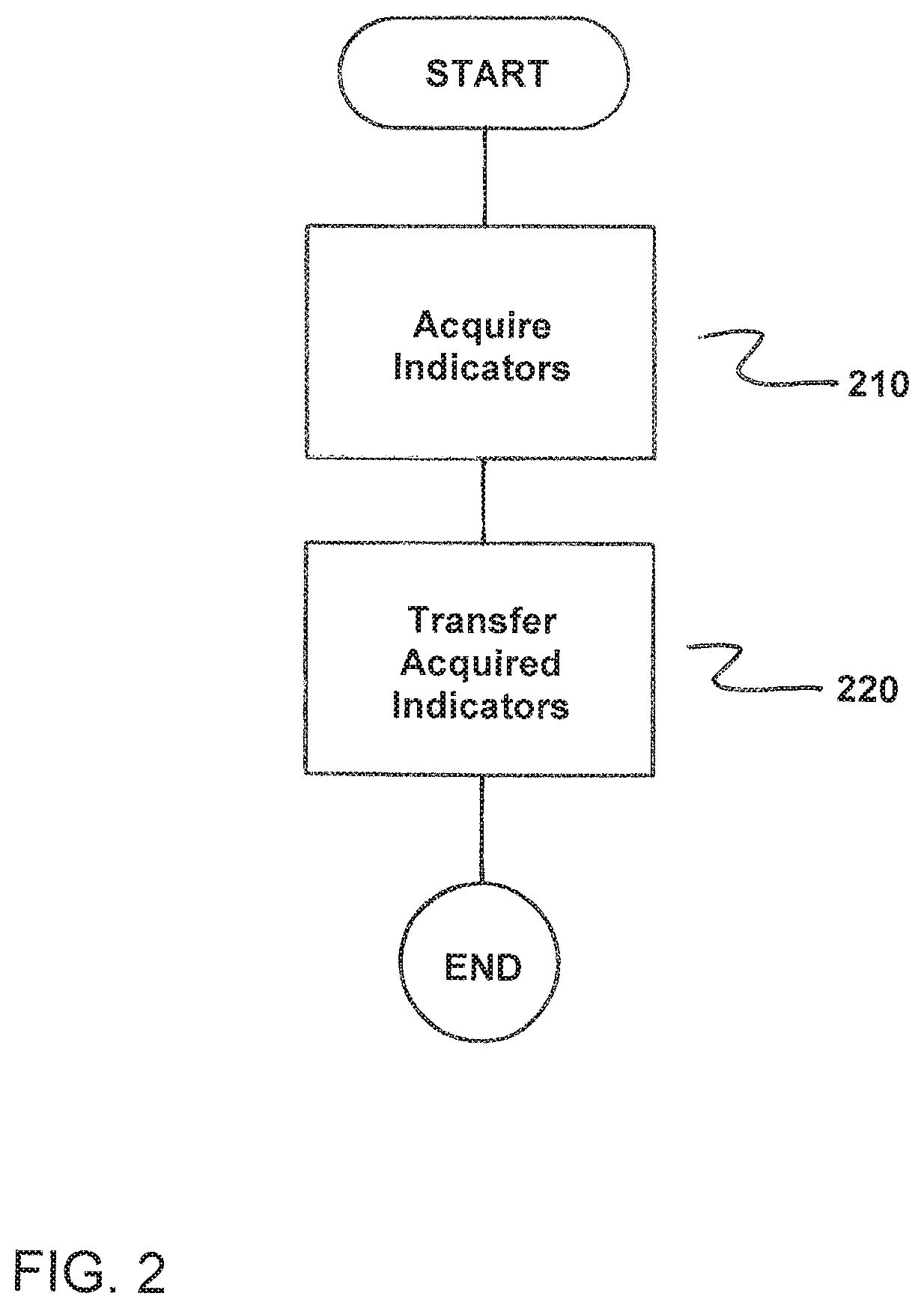Method for monitoring a mechanical system
a mechanical system and monitoring method technology, applied in the direction of testing/monitoring control systems, process and machine control, etc., can solve the problems of affecting the operation of the system, the combination of valve and drive regularly being stuck in the end position, and the valve may no longer be safe to close. , to achieve the effect of reducing material and reducing the amount of expenditur
- Summary
- Abstract
- Description
- Claims
- Application Information
AI Technical Summary
Benefits of technology
Problems solved by technology
Method used
Image
Examples
Embodiment Construction
[0046]FIG. 1 shows a valve system 1. The valve system 1 comprises a process valve 2, a pneumatic drive 3 and a pilot valve 4.
[0047]A medium flowing through a process line 5 is controlled by the process valve 2. The process valve 2 involves an open / close valve (on / off valve), which can be switched between the two statuses “valve open” and “valve closed”.
[0048]The switching of the process valve 2 occurs via the pneumatic drive 3. A membrane 7 coupled with a valve spindle 6 of the process valve 2 is moved in the pneumatic drive 3 in a known manner via compressed air guided through a compressed air line 8. In FIG. 1, the pneumatic drive 3 is shown as a representative of the conventional, known forms of embodiments without resetting springs. The process valve 2 may have all known configurations, such as “normally open” or “normally close”, “single-acting” or “double-acting”.
[0049]The pilot valve 4 is supplied with electrical power via an electrical supply network 9. The electrical supply...
PUM
 Login to View More
Login to View More Abstract
Description
Claims
Application Information
 Login to View More
Login to View More - R&D
- Intellectual Property
- Life Sciences
- Materials
- Tech Scout
- Unparalleled Data Quality
- Higher Quality Content
- 60% Fewer Hallucinations
Browse by: Latest US Patents, China's latest patents, Technical Efficacy Thesaurus, Application Domain, Technology Topic, Popular Technical Reports.
© 2025 PatSnap. All rights reserved.Legal|Privacy policy|Modern Slavery Act Transparency Statement|Sitemap|About US| Contact US: help@patsnap.com


